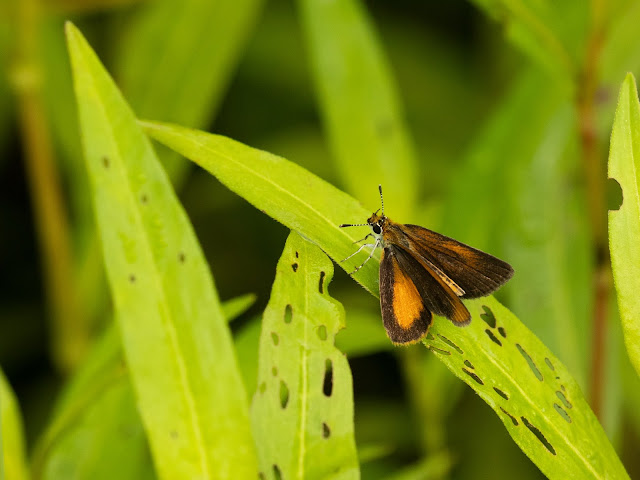Remember Those Black Tail Tips?

Blanchard's Cricket Frog Tadpole with Damaged Tail Tip, July 24, 2021 Today at the wetland I came across this Blanchard's cricket frog tadpole. The post of July 5th mentioned how the black tail tips of the tadpoles of this species, in addition to being a bold fashion statement, are thought to attract the attention of dragonfly naiads to less vulnerable areas of the tadpole's body and thereby increase the tadpole's chances of survival. As you can see by the missing tail tip of the tadpole in the photo above, that scenario may well have played out for this fortunate fellow. Water levels at the wetland continue to be much better than the low point so far this summer back in the middle of June, and storms are brewing tonight. There may yet be time for this cricket frog tadpole and others to reach maturity and be able to safety leave the wetland before it is dry. Stay tuned! Meanwhile during most visits to the wetland I still hear cricket frogs, green frogs and the occasion...






